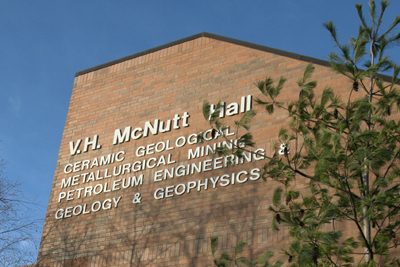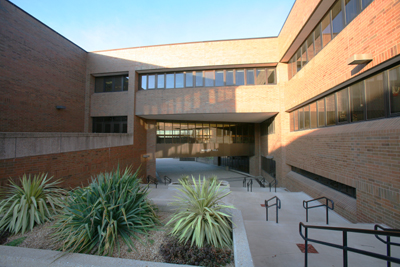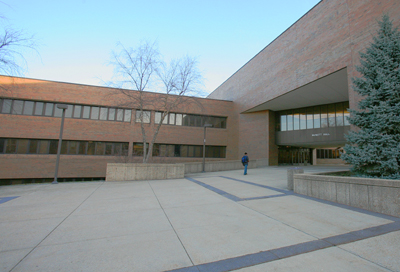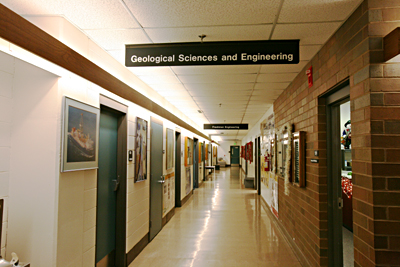Geophysical Facilities at UMR
Computer Hardware
Computing facilities in the Geophysics lab include a Sun Fire V250 dual
processor server with 8 GB of RAM, a Sun Ultra60 Unix workstation with
dual processors, and about 6,000 GB (i.e., 6 TB) of harddisk space.
The lab also has a dual-processor Sun LX50 server and an array of personal
computers. The 3-D seismic lab and the remote-sensing lab are equipped with
about 30 high-power PC computers for teaching and research.
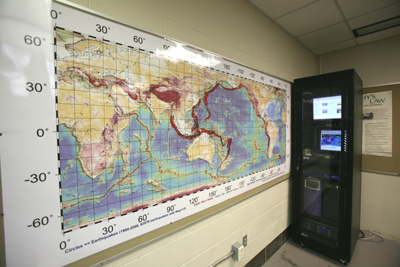
The vented case shown above hosts several powerful
Unix computer severs and an Urgent Power Supply
Computer Software
A large library of software has been established for teaching and learning,
geophysical data display, modeling, processing, and interpretation. Major
software packages include Matlab, Generic Mapping Tools (GMT), Seismic
Analysis Codes (SAC), Seismic Unix (SU), and many others for in seismic
tomography, shear-wave splitting, seismic-wave attenuation analysis, mantle
discontinuity imaging, seismic data interpretation, waveform forward modeling,
and potential field data processing and modeling. We also have a set of site
licenses for SMT Kingdom Suite (for 3-D seismic interpretation), Geographix,
and remote-sensing software packages.
Geophysical Exploration Equipment
The Department of Geological Sciences and Engineering owns a comprehensive
array of modern geophysical instruments to measure the gravity and magnetic of
the earth, and to conduct resistivity, EM, GPR, and seismic reflection/refraction
experiments.
Data Sets
Data sets include seismic waveforms collected in the U.S., Russia, Africa, South
America, the US, and China. Steve Gao and Kelly Liu were involved in the field
experiments that recorded some of the data sets. We have obtained and processed
all the broadband data recorded by the approximately 200 broadband stations
in the Global Seismic Network (GSN) and GEOSCOPE network from earthquakes of
5.5 or larger.
In addition, we have a large database of common-purpose data sets, such as global
or regional digital elevation in various resolutions, global gravity anomalies,
regional magnetic field, global seismicity, ages of ocean floor, distribution
of volcanos,
hot spots, various seismic velocity models, and the coordinates of plate boundaries.
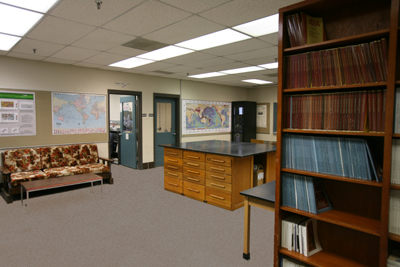
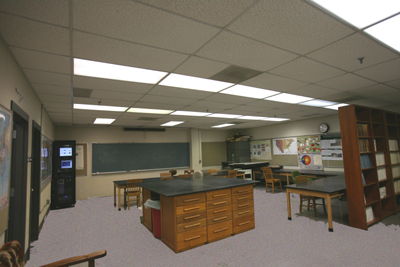
Shown above is the approximately 1400 ft^2 UMR
Solid-Earth Geophysics lab in McNutt Hall (see below).
The two rooms on the left hand side are geophysics
graduate student offices.
Shown below are some snapshots of the V.H. McNutt Hall, a
well-designed teaching and research structure built in the 1980s.
